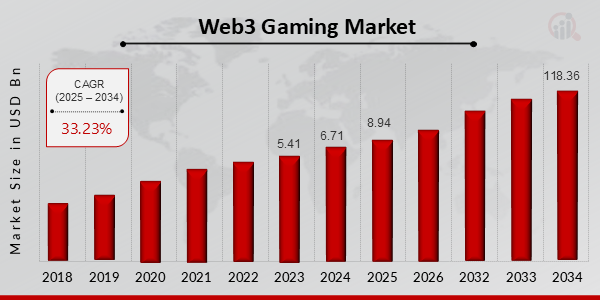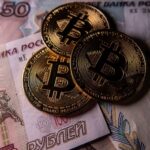Imagine a game in the new gaming environment where you don’t just complete levels and collect trophies, but truly own every sword, artifact, or even a piece of virtual land.
Where your efforts are rewarded not just with points, but with tokens that have real-world value, where the fate of the project isn’t decided by a corporation, but by you — alongside thousands of other players around the globe. This isn’t science fiction; it’s the reality ushered in by Web3 gaming.
In this article, you’ll discover how Web3 gaming works, how it differs from traditional models, what powers its economy, and why both major studios and indie developers are shifting to these new technologies. We’ll also show how SCAND helps build world-class Web3 solutions — and why now is the perfect time to enter this fast-growing industry.
What Is Web3 Gaming?
Web3 gaming is a new approach to developing and playing video games, built on decentralized technologies.
Unlike traditional gaming, where all assets and data are owned by developers or publishers, Web3 games are powered by blockchain and allow players to own in-game digital assets and non-fungible tokens, participate in the governance of game projects, and directly earn from their in-game activity.
How Is Web3 Gaming Different From Traditional Gaming Models?
In traditional games, users have no full control over their in-game items or progress. All data is stored on centralized servers, and game assets can be blocked, deleted, or lost when switching platforms.

Unlike traditional games, Web3 games are built from foundations of openness and true digital ownership. In this case, players really own their in-game assets as NFTs — not just use them, but buy, sell, trade, or even transfer them to other games.
And they can actually shape the future of the game through voting for features or updates within decentralized communities like DAOs. It’s a whole new dynamic: players aren’t just consumers anymore — they’re co-creators, investors, and collaborators.
Key Technologies Web3 Gaming
At the heart of every Web3 game are technologies, such as blockchain, smart contracts, gaming NFTs, and tokens. Blockchain keeps everything secure and transparent, so players can trust that every transaction and interaction is recorded and verifiable.
Smart contracts handle the behind-the-scenes mechanics — like automatically giving out rewards or triggering actions when certain in-game conditions are met.
NFTs turn game assets into something truly unique and ownable, whether it’s a character, a rare item, or a piece of virtual land. Tokens act as the game’s currency or even give players a say in how the project evolves.
Together, these tools create a decentralized game economy where players don’t just play — they earn, contribute, and actually own part of the world they’re in.
How Does The Web3 Game Work?
In a typical Web3 game, the player starts by connecting their crypto wallet — no traditional sign-up required. From there, they can earn or purchase in-game assets, which immediately become their digital property.
These assets, represented as NFTs, can be sold on marketplaces, transferred to other users, or even used in other games. Every action is recorded on the blockchain, ensuring full transparency and security. Tokens earned through battles, quests, or active participation can be spent within the game or exchanged for real-world value.
In this way, gameplay becomes not just entertaining but also potentially rewarding on a financial level.
Traditional Gaming Models vs. Web3 Gaming
To better understand how Web3 is changing the approach to gaming, let’s compare it to the traditional gaming model. Below is a table that illustrates the key differences between a centralized and decentralized approach to gaming, from asset ownership to participation in governance and data security.
| What’s Being Compared | Traditional Gaming | Web3 Gaming |
| Who owns your stuff? | All your in-game items belong to the game’s developers, a central authority, or the platform itself | You truly own your items as NFTs and tokens — they’re stored in your wallet |
| Can you trade your items? | Usually not — or only within strict platform rules | Yes — trade, sell, or transfer freely thanks to blockchain |
| How transparent is it? | Most systems run on closed, centralized servers you can’t really see into | Everything is recorded on-chain — open, transparent, and verifiable |
| Do you get a say? | Decisions are made behind closed doors by the game studio | With DAOs, players can vote on updates, rules, and even funding choices |
| Can you earn from playing? | Typically, only the game company profits | Players can earn tokens, trade NFTs, and join a real in-game economy |
| Can items move between games? | Not really — your stuff stays locked in one game | Some items and progress can carry over to other games or platforms |
| How safe are your assets? | If your account gets banned or the server shuts down(a classic single point of failure), you could lose everything | Your assets are in your wallet — you control them, not the game company |
Traditional Gaming vs. Web3 Gaming
Features of Web3 Gaming
Web3 games are changing not just how we play, but how we own, interact within the modern gaming sector, and earn from the gaming experience. Below, we’ll explore the key features that set Web3 gaming apart from traditional models and define its unique value for players, developers, and investors alike.
Transparency and Security in Blockchain Gaming
In Web3 games, everything is open. Every action is recorded on the blockchain, so there’s no room for cheating or hidden rules. Plus, decentralization makes the game much harder to hack.
In-Game Assets as NFTs
In Web3, what you earn or buy in-game is truly yours. Items come as NFTs, which means you can sell them, trade them, or even use them in other games. You actually own your gear — not just borrow it.
A Token-Based Economy
Tokens in Web3 games aren’t just in-game points — they have real value. You can use them to buy things, earn rewards, or even vote on game decisions. It’s an economy that works for both players and developers.
Play-to-Earn: Games That Pay
Web3 turns gaming into a source of income. By completing quests, winning tournaments, or creating content, you can earn tokens and NFTs that are worth something outside the game. It’s fun and financially rewarding.
Cross-Platform Compatibility
Your items don’t have to stay locked in one game. In Web3, that same sword or character can show up in other games too — as long as they’re in the same gaming ecosystem. It’s all connected, and your progress matters more.
Future of Web3 Gaming Industry
According to Market Research Future, the Web3 gaming market was valued at USD 6.71 billion in 2024 and is projected to reach USD 8.94 billion soon. By 2034, it’s expected to soar to USD 118.36 billion, reflecting an impressive compound annual growth rate (CAGR) of 33.23% over the forecast period (2025–2034). This positions Web3 gaming as one of the fastest-growing segments in the digital economy.
At the same time, short-term trends show signs of market correction. As reported by Statista, Web3 gaming and metaverse investments dropped to USD 1.8 billion in 2024, a 38% decrease compared to 2023. This decline suggests a shift from hype-driven funding to a more mature phase, where investors are becoming increasingly selective and focused on sustainable, high-quality projects.
Together, these trends indicate that Web3 gaming is entering a phase of sustainable growth — where success depends less on speed and more on solid technology, robust game economies, and engaged player communities.

Web3 Gaming Market Overview (2025-2034)
What is Gaming DAO
In the world of Web3 games, gaming DAOs are decentralized communities where players take an active role in shaping the project. Instead of developers making all the decisions, key matters — from game economy balancing to new features — are put to a vote by token or NFT holders.
These DAOs are built using smart contracts and blockchain technology, which means the rules are transparent and can’t be changed on a whim. Players can vote on updates, influence story development, and even help manage revenue distribution among guilds.
The benefit is clear: players genuinely feel like they have a say. It’s more than just playing a game — it’s being part of a digital community where you’re not just a user, but a partner.

Types of Gaming DAOs
Gaming DAOs can serve different purposes depending on the roles of their participants and the goals of the project. Some are focused on technical development, while others manage the community or in-game assets.
Below are the main types of Gaming DAOs commonly found in Web3 projects:
| Type of DAO | Description |
| Developer DAOs | Made up of developers and technical teams. They make decisions about updates, feature rollouts, and the game’s overall direction. |
| Player/Community DAOs | Composed of active members of the gaming community. They vote on rules, game balance, and future events. |
| Investor/Fund DAOs | Include investors and strategic partners. They focus on budget allocation, planning, and marketing. |
| Asset Management DAOs | Oversee NFT vaults, tokenized items, and resources. They decide how to use, trade, or distribute game assets. |
Types of Gaming DAOs
NFTs and Tokens in Web3 Gaming Platform
In Web3 games, tokens and NFTs do not give the player just tools but liberty: to possess, to decide the fate of the project, and to get rewarded in the process. This makes the game world more real. But responsibility comes along with it too — one has to realize what pitfalls lie on the path and how to deal with them.
The Role of NFTs in Gameplay
In Web3 games, NFTs aren’t just digital decorations, but point to actual, unique gaming assets. They can be anything a valuable asset would be: a rare sword, custom skin, a character with power or gaming skills, or even a gaming landscape.
In some instances, they only provide physical representation but many have real gameplay value including opening up special missions or providing extra strength to a character.
As each NFT is authenticated on the blockchain, you own it and can trade it, transfer it to your wallet, or use it in other games. It’s your asset, and your ownership is stored on the blockchain, not just an item sitting on the game server.
Utility and Governance Tokens
Web3 games usually run on two types of tokens. Utility tokens are your everyday game currency — use them to buy gear, upgrade your character, or unlock new content. You can earn them by playing or buying them on crypto exchanges.
Then there are governance tokens. These give you a say in where the game goes next — whether it’s economic changes, new features, or DAO proposals. It’s a bit like being part of a club where your vote actually counts.
Marketplaces and In-Game Trading
One of the coolest parts of Web3 gaming is the open marketplace. Whether it’s built into the game or on platforms like OpenSea or Rarible, these marketplaces let players trade items and tokens freely.
That rare outfit you earned? Someone else might be willing to pay real money for it. Some games even build their own decentralized exchanges (DEXs), where players trade directly — no middlemen, no extra fees. This turns in-game items into real, liquid assets with value beyond just gameplay.
Risks and Challenges
Of course, it’s not all sunshine and rainbows. The Web3 gaming economy still has its risks. NFT prices can skyrocket based on hype — and crash just as quickly. If the game’s economy isn’t balanced right, it can lead to inflation and loss of value.
And let’s not forget security: bugs in smart contracts or wallet breaches can lead to serious losses. That’s why good games take tokenomics seriously, invest in audits, and build with security in mind — to protect their players and keep things fair.
Web3 Solutions by SCAND
SCAND is an experienced software development company with over 20 years of history and hundreds of successful projects delivered worldwide. We specialize in building custom digital solutions, including products in the Web3, blockchain, and decentralized applications space. Our team is already working with clients from the gaming industry who are taking their projects to the next level with the power of Web3 technologies.

Our Web3 Gaming Services
At SCAND, we offer full-cycle Web3 game development — from initial concept and architecture to launch and scaling. We understand the unique demands of the gaming industry and deliver custom solutions focused on performance, user engagement, and sustainable in-game economies.
End-to-End Web3 Game Development
We design and build games with integrated blockchain-based gaming functionality — from game design and UI/UX to backend development. Our team works with modern game engines like Unity and Unreal, paired with different Web3 technologies such as Solidity, Web3.js, Ethers.js, and more.
NFT and Token Integration
We implement NFT mechanics and token-based economies in gaming projects. Our solutions enable the creation of unique in-game items and functional tokens that can be integrated into DeFi protocols or connected to external marketplaces.
DAO Infrastructure for Gaming Platforms
SCAND builds DAO ecosystems tailored to gameplay. This includes smart contracts for voting, profit distribution, community governance, and gamer-led funding structures — all designed to empower player involvement.
Smart Contract Security and Audits
Our team conducts in-depth technical audits and testing of all smart contracts to identify vulnerabilities. We ensure the highest level of security and compliance with Web3 best practices — a critical factor for games with real economic components.
Why Gaming Startups and Experienced Developers Trust SCAND
What sets SCAND apart is not just our Web3 expertise, but the way we work. We build scalable, reliable, and user-focused products — and we do it with a deep understanding of the challenges gaming teams face.
Whether you’re a startup building your first title or a studio expanding into Web3, we offer the flexibility to adapt and the stability to grow with you. Think of us as a tech partner who truly gets your goals — and helps you reach them faster.








